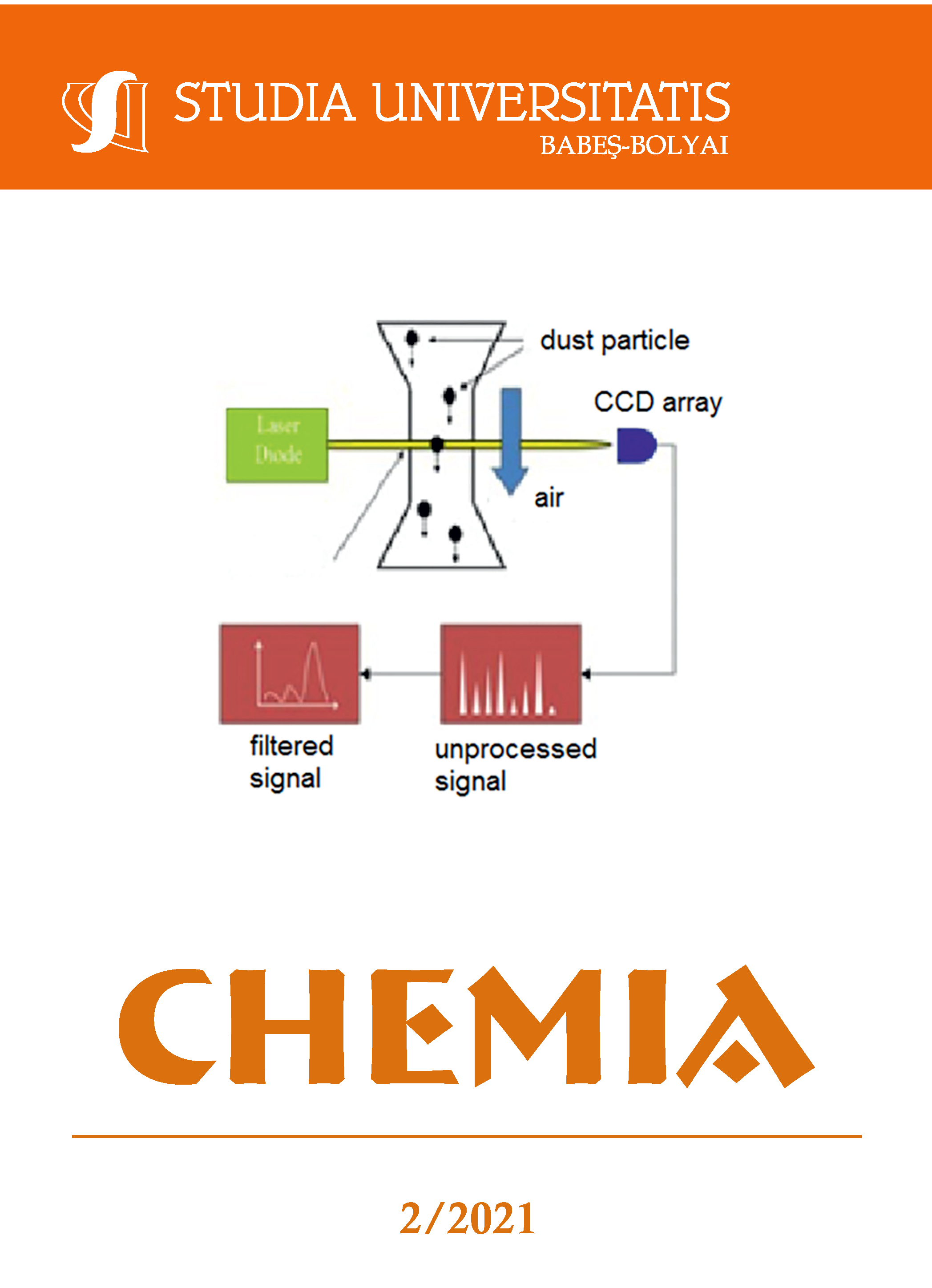DEEP EUTECTIC SOLVENTS FOR CO₂ CAPTURE IN POST-COMBUSTION PROCESSES
DOI:
https://doi.org/10.24193/subbchem.2021.02.20Keywords:
CO₂ capture, deep eutectic solvents, green solvents.Abstract
CO₂ emissions represent an actual problem for the environment. Additionally, the new demands for all chemical and physical processes request to be more eco-friendly. In this work, deep eutectic solvents (DESs), a relatively new class of solvents, were used for CO₂ capture and desorption. DESs are more environmentally friendly than classical solvents. Two choline chloride-based DES – ethaline (ChCl:EG, 1:2 molar ratio) and reline (ChCl:U, 1:2 molar ratio) were prepared and characterized before studying their CO2 absorption – desorption capacity. The formation of eutectics was confirmed by FT-IR analysis and DESs were characterized in terms of pH, density, viscosity, refractive index, and electrical conductivity. The tests showed that ethaline had better CO₂ absorption and desorption capacity than reline, which could be explained by several parameters.References
Government of France, “Integrated National Energy and Climate Plan for France,” 2020
N. US Department of Commerce, Global Monitoring Laboratory. "Global Monitoring Laboratory - Carbon Cycle Greenhouse Gases https://www.esrl.noaa.gov/gmd/ccgg/trends/history.html
EA, World gross electricity production, by source, 2018, IEA, Paris, https://www.iea.org/data-and-statistics/charts/world-gross-electricity-production-by-source-2018
J. Bae, Y. Chung, J. Lee, and H. Seo, J. Clean. Prod., 2020, 246, 119003
C. Hepburn, E.Adlen, J. Beddington, E.A. Carter, S. Fuss, N.M. Dowell, J.C. Minx, P. Smith, C.K. Williams, Nature, 2019, 575, 7781, 87–97
Y. Wang, L. Zhao, A. Otto, M. Robinius, D. Stolten, En. Proc. 2016, 114, 650-665
A. Paiva, R. Craveiro, I. Aroso, M. Martins, R.L. Reis, and A.R.C. Duarte, ACS Sustain. Chem. Eng., 2, 5, 1063–1071
Y. Zhang, X. Ji, and X. Lu, Renew. Sustain. Energy Rev., 2018, 97, 436–455
R.B. Leron, A. Caparanga, M.-H. Li, J. Taiwan Inst. Chem. Eng., 2013, 44, 6, 879-885
B. Leron, M.-H. Li, Thermochim. Acta, 2013, 551, 14-19
X. Li, M. Hou, B. Han, X. Wang, L. Zou, J. Chem. Eng. Data, 2008, 53, 548–550
A. Malik, H.S. Dhattarwal, H.K. Kashyap, The J. of Phys. Chem. B, 2021, 125, 7, 1852-1860
N.R. Mirza, N.J. Nicholas, Y. Wu, K.A. Mumford, S.E. Kentish, G.W. Stevens, J. of Chem. & Eng. Data, 2015, 60, 11, 3246-3252
E. Ali, M.K. Hadj-Kali, S. Mulyono, and I. Alnashef,” Int. J. Greenh. Gas Control, 2016, 47, 342–350
M. Hayyan, T. Aissaoui, M.A. Hashim, M.A.H. AlSaadi, A. Hayyan, J. Taiwan Inst. Chem. Eng., 2015, 50, 24–30
T. Aissaoui, Pharm. Anal. Acta, 2015, 6, 11, 11–14
W. Li, Z. Zhang, B. Han, S. Hu, J. Song, Y. Xiea, X. Zhou, Green Chem., 2008, 10, 1142–1145
Q. Zhang, K. De Oliveira Vigier, S. Royer, and F. Jérôme, Chem. Soc. Rev., 2012, 41, 7108–7146
A.P. Abbott, R.C. Harris, K.S. Ryder, J. Phys. Chem. B, 2007, 111, 18, 4910–4913
K. Shahbaz, S. Baroutian, F.S. Mjalli, M.A. Hashim, and I.M. Alnashef, Thermochim. Acta, 2012, 527, 59–66
A.P. Abbott, G. Capper, S. Gray, ChemPhysChem, 2006, 7, 4, 803–806
M. Taherzadeh, R. Haghbakhsh, A.R.C. Duarte, and S. Raeissi, J. Chem. Eng. Data, 2020, 65, 8, 3965–3976
C.R. Ashworth, R.P. Matthews, T. Welton, and P.A. Hunt, Phys. Chem. Chem. Phys., 2016, 18, 27, 18145–18160
R.B. Leron, A.N. Soriano, and M.H. Li, “J. Taiwan Inst. Chem. Eng., 2012, 43, 4, 551–557
P.K. Chhotaray, S.K. Biswal, and S. Pandey, J. of Molec. Liq., 2020, 312, 113477
S. Sarmad, Y. Xie, J.P. Mikkola, and X. Ji, New J. Chem., 2016, 41, 1, 290–301
J. Naser, F. Mjalli, B. Jibril, S. Al-Hatmi, and Z. Gano, Int. J. Chem. Eng. Appl., 2013, 4, 114–118
Downloads
Published
How to Cite
Issue
Section
License
Copyright (c) 2021 Studia Universitatis Babeș-Bolyai Chemia

This work is licensed under a Creative Commons Attribution-NonCommercial-NoDerivatives 4.0 International License.



